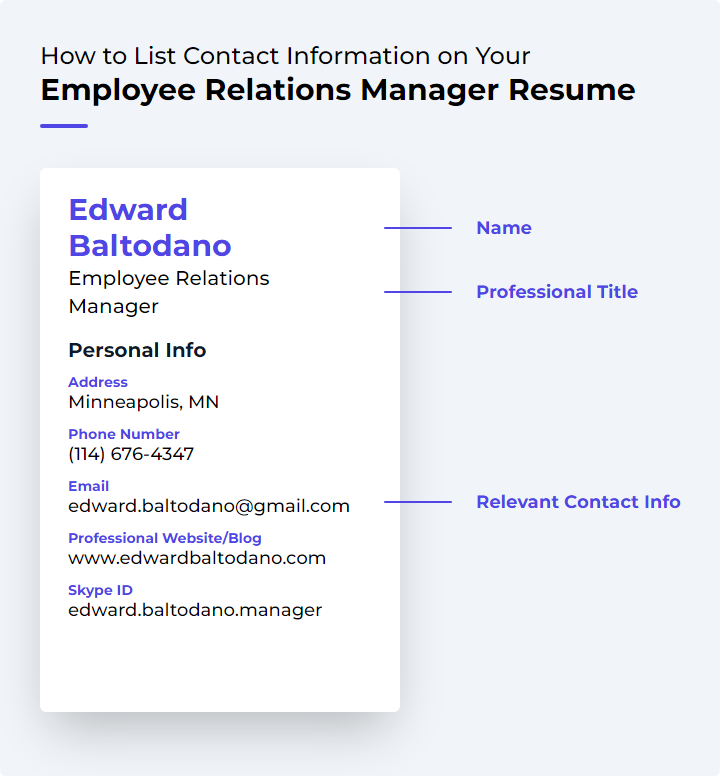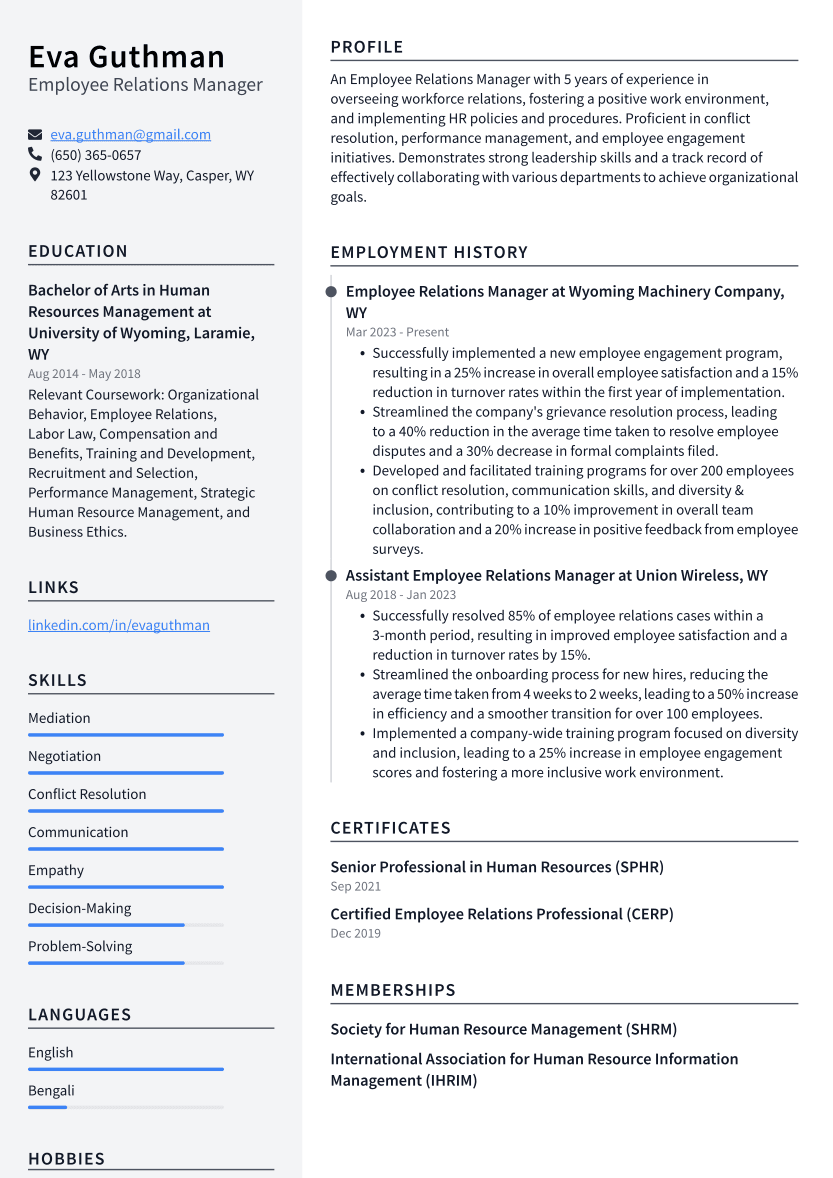Employee Relations Manager Resume Examples
Writing a great employee relations manager resume is important because it is one of the first things a potential employer will see when they are considering you for a position. It is your opportunity to make a good first impression and sell yourself as the best candidate for the job.
Create your resume
Select from 7 professional resume templates
If you're looking for inspiration when it comes to drafting your own employee relations manager resume, look no further than the samples below. These resumes will help you highlight your experience and qualifications in the most effective way possible, giving you the best chance of landing the employee relations manager job you're after.
Essential Components of an Employee Relations Manager Resume
An Employee Relations Manager's resume is a pivotal document that showcases your expertise, professional history, and credentials. It's your ticket to demonstrating your proficiency in managing employee relations, resolving conflicts, and ensuring compliance with labor laws. A well-crafted resume can be the difference between landing an interview and being passed over.
Let's delve into the essential sections of an Employee Relations Manager resume, discuss their significance, and provide insights on how to optimize each one to capture the attention of prospective employers.
1. Contact Information
Contact Information is the gateway for recruiters to connect with you. It's typically the first section they look for, so clarity and accuracy are paramount.

Include your full name, physical address, phone number, and a professional email address. Consider adding your LinkedIn profile and other professional social media handles if relevant and well-maintained. Double-check for accuracy to ensure you don't miss any opportunities.
Limit personal information to what's necessary for job applications, avoiding details like age or marital status to comply with privacy and anti-discrimination laws.
2. Objective Statement
The Objective Statement serves as your resume's introduction, succinctly stating your career aspirations and why you're the ideal candidate for an Employee Relations Manager position.
Customize this statement for each application, highlighting your understanding of the role, relevant experience, and how you plan to contribute to the company's success. Make it compelling to encourage hiring managers to read further.
Example: "With over a decade of experience fostering positive employee relationships, I am eager to leverage my conflict resolution expertise and comprehensive knowledge of labor laws to enhance XYZ Company's workplace environment and drive productivity."
Tip: Keep it concise and engaging to grab the attention of busy recruiters.
3. Work Experience
Your Work Experience chronicles your professional journey, underscoring your suitability for the Employee Relations Manager role.
List your relevant positions in reverse chronological order, detailing your responsibilities and accomplishments. Use action verbs and quantify achievements to provide a clear picture of your capabilities and impact.
Emphasize experiences that align with the core responsibilities of an Employee Relations Manager, such as developing employee relations policies, advising on disciplinary actions, and fostering a positive work environment.
4. Skills and Competencies
The Skills and Competencies section is your chance to shine a spotlight on the abilities that make you a standout Employee Relations Manager.
- Communication Skills: Essential for articulating complex issues and maintaining open dialogue across all company levels.
- Conflict Resolution: Critical for mediating disputes and promoting harmonious workplace relations.
- Knowledge of Labor Laws: Fundamental for ensuring organizational compliance and providing informed guidance.
Align your skills with the specific demands of the job you're applying for, showcasing both technical and interpersonal competencies.
5. Education and Certifications
The Education and Certifications section validates your academic and professional qualifications for the role of an Employee Relations Manager.
List degrees and certifications that are pertinent to the field, such as a bachelor's or master's in Human Resources or Business Administration, and any relevant HR certifications like PHR, SPHR, or SHRM-CP.
Highlighting ongoing education or training can also demonstrate your commitment to professional growth and adaptability in a dynamic work environment.
6. Achievements and Awards
The Achievements and Awards section differentiates you from other candidates by showcasing your exceptional contributions and recognitions in the field of employee relations.
Detail significant accomplishments, such as successful conflict resolutions or the development of impactful engagement programs, and any awards received, providing context and quantifiable results to illustrate your effectiveness.
7. References
References add credibility to your resume by offering potential employers insights from those who have witnessed your professional performance.
Select references who can attest to your skills and experiences as an Employee Relations Manager, such as former supervisors or colleagues. Always obtain their permission and confirm their contact information before listing them.
While it's common to note that references are available upon request, having a prepared list can expedite the verification process when needed.
In summary, a meticulously composed resume that includes these key elements can significantly enhance your prospects as an Employee Relations Manager. It's not just a summary of your background; it's a strategic tool to position yourself as the ideal candidate for your desired role.
